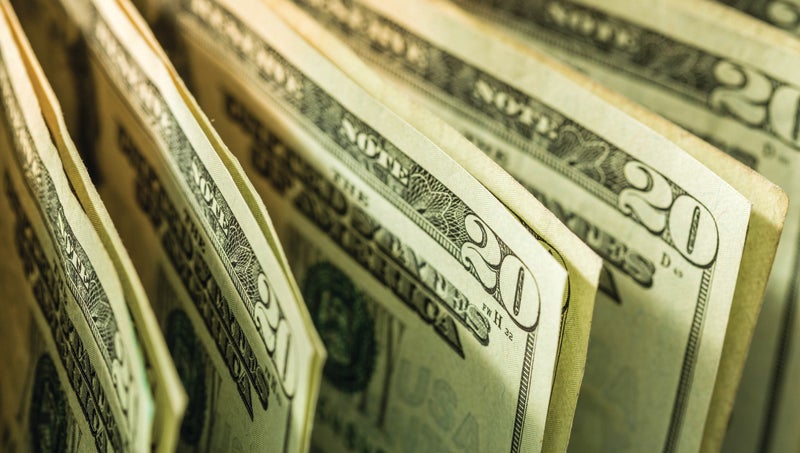Where’s my stimulus check?
Published 5:51 pm Monday, April 20, 2020
|
Getting your Trinity Audio player ready...
|
As the first wave of economic impact payments went out last week, approximately 80 million Americans saw direct deposits from the federal government in their bank accounts, according to estimates from the Internal Revenue Service. Ranging from $1,200 for individuals to $2,400 for married couples, plus $500 per child under 16 years old, the payments are intended to help Americans weather the economic hardships associated with the COVID-19 pandemic.
But for the 251 million Americans who have yet to see their payments, a common question remains — where’s mine?
The answer to that question, however, is complex. Essentially, it depends on your federal income tax filings for 2018 and 2019. For those who have direct deposit information on file with the IRS for those years, payments should come quicker.
But according to a timeline laid out by the U.S. House Ways and Means Committee, it could take until the end of August for some Americans to receive paper checks.
Here are some answers to some basic questions regarding payments:
Who has already been paid?
Generally speaking, the 80 million people who received their funds last week were those who received tax refunds on their federal income taxes for 2018/2019 and received those refund payments via direct deposits from the IRS.
What about everyone else?
Those who do not have direct deposit on file with the IRS will receive their payment by means of a paper check. The first wave of checks is scheduled to go out this week, at an estimated rate of five million checks per week until everyone eligible is paid, a process that could take up to 20 weeks. People with lower incomes will receive their checks first.
Who is eligible for payments?
In order to receive a payment, an individual must earn less than $99,000 annually, $136,500 for heads of household or $198,000 for married couples. Also receiving payments will be eligible retirees and recipients of Social Security, Railroad Retirement, disability or veterans’ benefits, as well as taxpayers who do not make enough money to normally have to file a tax return.
Who is not eligible?
Those who can still be claimed as dependents on someone else’s tax returns are not eligible for payment, including some young adults from ages 17 to 24. Their parents also won’t receive the $500 per-child money they would for children under 16. Also ineligible are those who don’t have a valid Social Security number, nonresident aliens and those who filed certain forms on their 2019 taxes.
How do I check on the status of my payment?
At the beginning of last week, the IRS launched the “Get My Payment” tool on its website at www.irs.gov/coronavirus/get-my-payment, allowing Americans to track the status of their payments. According to multiple media reports, however, many Americans are having problems checking their status, receiving error messages such as “Payment status not available” or “We can’t determine your eligibility.”
According to an IRS FAQ page, this might be because 2019 returns are still being processed, or because the application doesn’t have your information yet. Those experiencing issues are encouraged to try every 24 hours.
Can I update direct deposit information with the IRS?
Yes, in theory. Those who don’t have direct deposit information on file with the IRS can use the “Get My Payment” tool to input direct deposit information. Those who receive error messages, however, are unable to do so. Non-filers can also use a separate tool to enter their direct deposit information.
What if I had to pay additional taxes in 2018/2019 and the IRS withdrew funds directly from my bank account?
While the IRS may have been able to take those funds out for tax payments, it doesn’t work the other way. In most cases, those who had to pay the IRS will be waiting on paper checks unless they update their bank account information via the Get My Payment tool.
Do I have to pay this money back?
No. According to H&R Block Master Tax Advisor Keith Kidwell, these payments will not be considered taxable income on 2020 tax returns, and it does not have to be repaid, even if the federal government overpays.
“The only thing that goes on the tax return next year is how much you got, to verify you got at least what you should have,” Kidwell said. “If you did not get what you should have, you will get the rest of it on next year’s return.”
What if I paid my tax preparation fees using funds from my 2018/2019 refund?
For those who made arrangements with their tax preparers to pay for services using their direct deposit refunds, stimulus money may end up somewhere besides their personal account.
“We have a system nationwide called a refund transfer,” Kidwell said. “We have an arrangement with the bank and that bank gets your refund. They take my fee off of your refund and then they take the balance of that and put it into an account you draw the money from that they have opened on your behalf.”
For those who filed in that way in 2018, but did not yet file or owed money for 2019, the IRS has tried to deposit stimulus money in those temporary 2018 refund accounts, which have since been closed.
Will the IRS call me about my payment?
No. The IRS will not call, text, email or contact you on social media regarding economic impact payments, and the agency cautions the public to be aware of scammers who may attempt to steal banking information through these methods.
For more details about Economic Impact Payments, visit www.irs.gov/coronavirus/get-my-payment-frequently-asked-questions.






